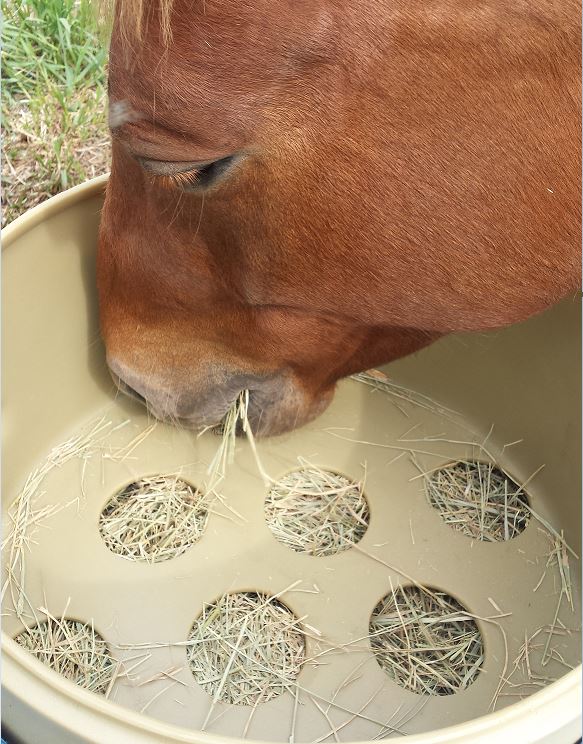Dr. Juliet M. Getty
Ever been told that your horse has a hay belly and needs to lose weight? Well, relax! He’s not fat, he just has gas! In fact, gas production is normal and healthy. It indicates that your horse is getting enough hay for hind gut microbial fermentation to occur.
A distended abdomen is often referred to as a “hay belly” to describe an overweight horse, even when the rest of his body is normal, but actual fat does not accumulate extensively on the horse’s lower abdomen (belly).
Horses do accumulate worrisome fat in specific areas: neck, withers, back, ribs, shoulders, and tail head. Excessive fat in these areas increases a risk for laminitis and increased inflammation throughout the body. In 1984, Dr. Don Henneke, of Texas A&M University, developed a “body condition scoring system” that categorizes horses’ condition based on the amount of fat stored in these six areas. This system is still the mainstay for equine health professionals.
Porta-Grazer allows your horse to graze when pasture is not an option
Horse owners who deliberately limit hay consumption and replace it with cereal grain to avoid a hay belly are doing their horses a disservice and are increasing the risk of digestive and metabolic disorders. Forage should be the foundation of any horse’s diet. It is vital for the health of the hind gut microbes, and hence, the health of your horse.
Dr. Getty provides a world of useful information for the horseperson at www.gettyequinenutrition.com. Sign up for her informative, free monthly newsletter, Forage for Thought.

